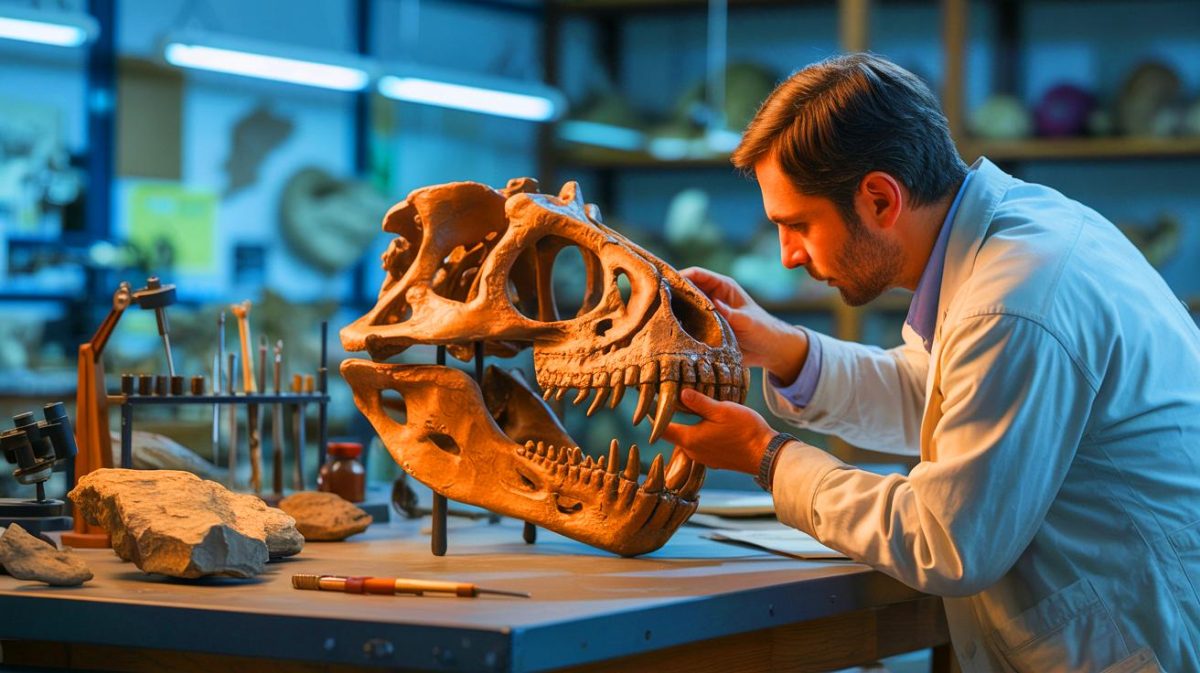| IN A NUTSHELL |
|
The discovery of the Cambelodon torreensis fossil in Portugal’s Freixial Formation has unveiled new insights into the evolutionary story of early mammals. This breakthrough is reshaping our understanding of multituberculates, a successful group that thrived for over 100 million years. Scientists are now piecing together the evolutionary journey of these ancient creatures, which resembled rodents with their distinctive dental patterns. The meticulous study of the well-preserved jaw and teeth from this new species offers a fascinating look into the past, providing a glimpse into the unique evolutionary adaptations that occurred during the Jurassic period.
Fossil Discovery in 2021
The year 2021 marked a significant milestone in paleontology when Dr. Graça Ramalheiro from Sociedade de História Natural unearthed a remarkable fossil in Europe. This discovery took place in the Ulsa quarry, located within Portugal’s Freixial Formation, which dates back to the late Tithonian age of the Jurassic Period. Within this rich geological tapestry, a well-preserved right lower jaw was discovered, complete with intact fragments of incisors and premolars. This fossil belonged to a young Cambelodon torreensis, marking the first definitive evidence of this new species. The Tithonian age lasted from approximately 152.1 million to 145 million years ago, and the fossils found in this region provide invaluable insights into the ancient world. While various other fossils were found in the same block, the hemimandible of C. torreensis stands out as a significant find, opening new avenues for understanding the evolution of multituberculates.
Unique Process of Teeth Formation
The discovery of the Cambelodon torreensis has provided a rare opportunity to study the unique process of teeth formation in early mammals. Specimen SHN.830’s teeth were compared to those of over ten different species from the Guimarota coal mine, revealing a distinctive combination of features. These included large triangular lobes, five projections on key premolars, and nine basal cusps on its largest premolar. This combination confirmed the identification of a new species. The juvenile nature of the specimen allowed scientists to study its tooth eruption pattern, revealing a posteroanterior replacement pattern. This means that teeth were replaced from back to front, a pattern that is exceptionally rare and challenging to study. In C. torreensis, the replacement process was disorganized, with not every tooth replaced at the same stage, showcasing a unique evolutionary adaptation.
Implications of the Discovery
The discovery of the Cambelodon torreensis fossil has significant implications for our understanding of early mammalian evolution. The unique dental patterns observed in this species provide insights into the evolutionary adaptations that were occurring during the Jurassic period. The non-sequential posteroanterior tooth replacement pattern was previously thought to be exclusive to the multituberculate family Paulchoffatiidae. However, the presence of this pattern in C. torreensis pushes the known timeframe for this dental feature into the late Tithonian. This suggests that these adaptations were more widespread and diverse than previously understood. The findings, published in the journal Papers in Palaeontology, represent a major step forward in unraveling the complexities of mammalian evolution.
Future Research Directions
As we continue to explore the story of early mammals, the discovery of Cambelodon torreensis opens up new avenues for future research. The unique dental patterns and evolutionary adaptations observed in this species raise intriguing questions about the evolutionary pressures and environmental conditions that shaped the development of multituberculates. Future studies could focus on comparing the dental and skeletal features of C. torreensis with other multituberculate species to better understand the evolutionary relationships within this group. Additionally, further excavation and analysis of fossils from the Freixial Formation and other similar sites could provide additional insights into the diversity and distribution of early mammals during the Jurassic period.
The discovery of Cambelodon torreensis has expanded our knowledge of early mammalian evolution and highlighted the complexities of their evolutionary journey. As paleontologists continue to uncover new fossils and analyze existing ones, the story of multituberculates and their place in the evolutionary tree will become clearer. What other secrets might the ancient rocks of Portugal still hold, waiting to be discovered by the curious minds of future scientists?
Did you like it? 4.4/5 (22)








C’est incroyable de penser à tout ce que nous avons encore à découvrir sur l’évolution des mammifères! 🦷
Est-ce que quelqu’un sait si ces découvertes ont été controversées parmi les paléontologues?
Merci pour cet article fascinant! J’ai appris beaucoup sur les multituberculés. 😊
Je me demande comment ils ont réussi à déterminer l’âge exact du fossile.
Les processus de remplacement des dents sont vraiment compliqués. Qui aurait cru que les dents pouvaient être remplacées de l’arrière vers l’avant?
Oh, un autre fossile du Jurassic. Je pense qu’on en a déjà assez découvert, non? 😅
Les détails sur la formation dentaire sont fascinants. Je me demande comment cela a affecté leur alimentation.
Quelle est la prochaine étape? Une série Netflix sur les multituberculés? 😂